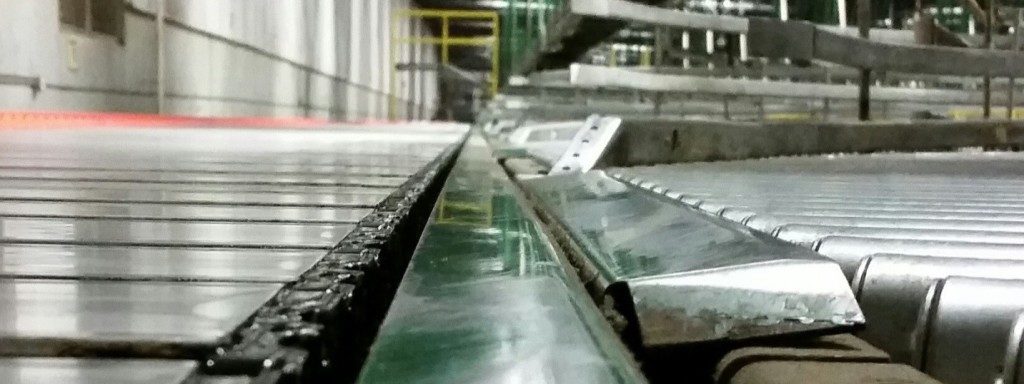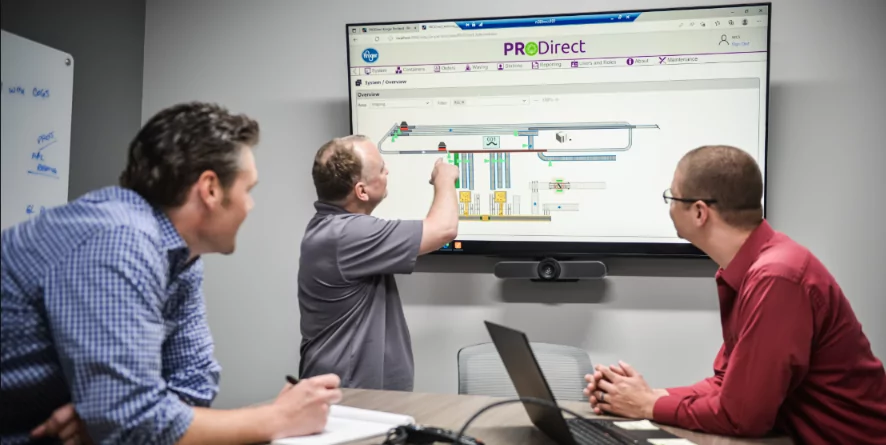As with your automobile, even with regular maintenance mechanical systems start to show normal wear and tear. The following information outlines several key areas we have observed with past system assessments.
The ideas outlined can provide a large increase in system efficiencies by reducing time spent fixing jams and increasing system performance. As always, follow closely the manufacturers’ recommended preventative maintenance procedures in addition to safety procedures before attempting any work on your system.
CARTON CONVEYING OBJECTIVE
A key objective in the evaluation and improvement of mechanical systems is to improve the alignment and conveying characteristics of the cartons throughout the system; put simply: Carton Control. Cartons that convey poorly through your system can cause downtime due to jams, inefficient sorting and additional labor requirements for fixing and keeping the system running smoothly.
Many different mechanical items may cause cartons to convey poorly in your system. Each one of these occurrences has the potential to cause challenges and when many of these items combine, they can be very detrimental to your system’s overall performance.
1. OPPORTUNITY: Check Proper Loading
Cartons should be loaded lengthwise so that the longest dimension is in the direction of travel. In addition, when placing cartons into the system, placing them so that there is adequate gap between cases will create the ideal situation to allow the system to operate properly (i.e. especially in cases where operators are picking to a stopped belt). In general, it does not matter which edge to align against although certain design elements will require a specific side of the conveyor (diverting areas, etc.).

CONVEYANCE THROUGH THE SYSTEM
Keeping the cartons conveying properly throughout the system by having them remain edge aligned is another key consideration. Many factors may cause a properly conveying carton to start running inefficiently. Here are some key points to consider as you review your system.
2. OPPORTUNITY: Check Straight & Level
Conveyors should be checked for straightness and levelness on a semi-annual basis. Conveyors that are not straight and level may cause the cartons to track off the edge of the side rail. Over longer runs of conveyor, even a little misalignment will cause cartons to become mis-aligned and/or “jumbled”. Orientating cartons so they are properly aligned along one common edge of the conveyor (edge justified) keeps cartons in line.
Conveyors located in high fork truck traffic areas are key places to consider. Running a string along the length of the conveyor is a good way to check for proper straightness. Readjusting these runs may also require re-squaring the individual bed sections of the conveyor. See the diagram below for information on how to verify proper bed alignment.

3. OPPORTUNITY: Check Carton Transition
Elevation transitions from one conveyor to the next have several key areas to check for proper operation. A level transition from one conveyor to another, especially when the conveyor types are different, is important to check. Locations where there are poor transitions can result in tumbling, side-by-sides, etc. Bear in mind, for some merges and diverges to operate properly there needs to be a height difference between the two interface points.

4. OPPORTUNITY: Check Gaps
Another key area to check is the distance that cartons travel from one conveyor pulley to the next. Too much gap in these areas can cause cartons to hang up, tumble or collide with other cartons.
In general, having the gap be about 1/3 the distance of your shortest carton is a good practice. For systems with very short cartons, gap fillers are a good addition where the pulleys are unable to get close enough together.
5. OPPORTUNITY: Check Speed Transitions
Speed transitions from one conveyor to the next are also important areas to review. Conveyors that feed cartons from a faster moving conveyor to a slower moving conveyor will push cartons together causing them to jam. Key areas to review are belt transitions, the infeed of curves, gravity gates and zero pressure accumulators to belt conveyor.
When transitioning from one conveyor to the next, the speed should generally be the same between the two conveyors. In some system designs where a straight section is feeding a curve, running the curve slightly faster can be a good practice.
Additionally, conveyors feeding gravity gates with too high of a rate, can create a situation where cartons become misaligned, end up side-by-side, or otherwise end up with poor presentation. Gravity gates may need additional pitch, or sometimes replacing a gravity gate with a powered gate is a simple solution to correct this issue.

6. OPPORTUNITY: Check Carton Edges
To ensure that accumulation conveyors run properly, it is important that cartons are edge referenced to run properly. Cartons should be edge referenced prior to running on accumulation conveyor. The inclusion of edge referencing design elements such as skew sections, double wide infeed sections and offset transition areas greatly improve efficiency. These design elements are typically located at the infeed of a conveyor run. Please see the system sketch below for an example.

7. OPPORTUNITY: Check Roller Performance
Even with these design elements, your accumulation conveyors should be checked for proper operation. Zones where the rollers are not turning caused by malfunctioning sensors or air actuators can be a major cause of cartons not conveying efficiently.
To determine if your zones are not functioning properly, visually inspect the conveyor rollers to see if the rollers are turning. When the conveyor is empty, all the zones should be active with rollers turning. If air actuators are not working properly, you can often hear air leak at that zone as well when no carton is present. Additionally, with the air shut off, all rollers should stop turning. If rollers continue to turn, this may mean zones (or pucks) have been shimmed up, which creates excessive line pressure and jammed cartons. Each zone should be periodically checked (approximately quarterly) for proper operation.
8. OPPORTUNITY: Check Sensor Performance
In addition, some older style accumulation conveyors use spring loaded mechanical actuators to sense cartons present in a respective zone. Often with lighter boxes the mechanical sensor is not able to be fully actuated causing the carton to stall and become jammed at that zone. If this is a common occurrence in your system, consideration for retrofitting the accumulation conveyors with photo-eye controlled zones is a good option.

Photo eye controlled zones are a newer technology that does not require the cartons to contact a sensor to start the accumulation process. These types of sensors work with all conveyable carton weights.

9. OPPORTUNITY: Check Guardrail Hangups
Guardrail sections can be improperly adjusted causing cartons to catch as they convey along the edge. Check to make sure guardrail is properly adjusted along the entire length of the conveyor. In addition, at each guardrail intermediate section make sure that tabs of each joint are overlapped properly.

10. OPPORTUNITY: Check Merging Hangups
Merges utilizing fixed guardrail to combine two conveyors can also be potential hang up areas for cartons. In addition to making sure the guardrail is properly adjusted, retrofitting the guardrail in those sections with skate wheel inserts can help provide for a smoother flow.
In closing, many of these items are simple to observe and implement. Reviewing your system for these types of items is an important ongoing activity to ensure your system operates at peak efficiency




